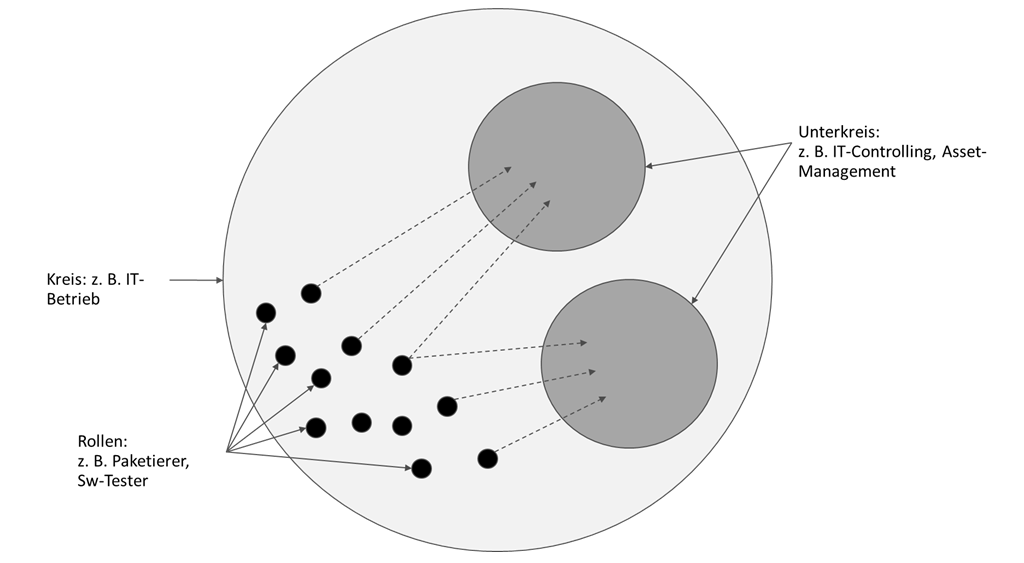
From hierarchy to ...? Why the classic management model has had its day
In situations of uncertainty, there is often a reflex for leadership or advice and the delegation of decision-making needs to others. "Mrs/Mr XY said that we should do it this way!" – the classic when it comes to shifting responsibility onto others. Why is that actually the case? This article is intended to make you think: about your own work, your role in the company – a plea to take responsibility.
The conceptual discussion of leadership, management and hierarchy is – as is so often the case – a good starting point.
The Gabler Business Dictionary defines leadership as "the orientation of the actions of individuals and groups towards the realization of predetermined goals; involves asymmetrical social relationships of superiority and subordination." This classic understanding of leadership is based on a clear organization and hierarchy, similar to what we know from almost every organizational matrix:

Anyone who has ever worked with GenZ knows that leadership can no longer work like this.
One of the best-known organizational and business psychologists, Lutz von Rosenstiel, on the other hand, defines leadership as follows: "Leadership is the conscious and goal-oriented exertion of influence on people"*.
Probably the biggest difference is the associated hierarchy. While the classic definition of leadership presupposes an asymmetrical relationship (hierarchy) within the company, Rosenstiel does not recognize this as a prerequisite for leadership.
Why is hierarchy not a prerequisite for leadership?
A look at a project or company meeting already allows conclusions to be drawn here. A classic meeting: The manager is in a meeting with employees to discuss a specialist topic. Experience shows: The manager will rely on the opinion of the experts. So who led this meeting? The hierarchically defined manager or the employees with expertise? This situation is emblematic of the fact that – at least in modern corporate culture – there is no need for a predetermined hierarchy in order to lead.
So why do we need hierarchy?
One of the pioneers of modern management theory, Peter Drucker, recognized this problem early on. At the beginning of the 20th century, he emphasized three theses that companies must adapt to**:
- The most important thing in management work is to have goals, understand them and set them for others
- The need for decentralization to promote flexibility and accountability
- Knowledge is the only significant resource in a post-capitalist society
One concept that attempts to migrate these theories into practice is holacracy. This organizational structure aims to dismantle traditional hierarchies. The approach was developed by Brian Robertson, an entrepreneur from Philadelphia, USA. It is based on a leadership and management approach that extends decision-making and power distribution to all members of an organization in order to promote an inclusive, participative and efficient working environment. Holacracy is characterized by its focus on transparency and the promotion of participatory opportunities for involvement within the organization, supported by a clearly defined set of rules. In practice: company activities are organized and independently controlled via roles and decentralized – non-hierarchical – "circles" (composites of different roles).

The prophets of doom are quick to say: "That's unrealistic. It can't work" – yes maybe / maybe not – it is at least a new thought-provoking impulse that can also ensure flexibility in your own environment: simply by thinking differently. The first companies in the USA have been in the process of introducing the principles of holacracy throughout the company since 2015. The success will show. In our experience, the frustration of many employees in their organization often results from a lack of co-determination, supposed cluelessness on the part of managers when it comes to specialist topics and lengthy processes.
The thought-provoking impulse from the holocracy is at least an exciting thought construct – let's see what comes of it...
Author: Christian Grabner
* Rosenstiel, Führung von Mitarbeitern: Handbuch für erfolgreiches Personalmanagement. 2009, S. 3
** vgl. Drucker, P.:
1: The practice of management. 1954. S. 128ff.;
2: Management: Tasks, Responsibilites, Practices. 1973. S. 25ff.;
3: Die postkapitalistische Gesellschaft. 1993. S. 267